By Les Tan
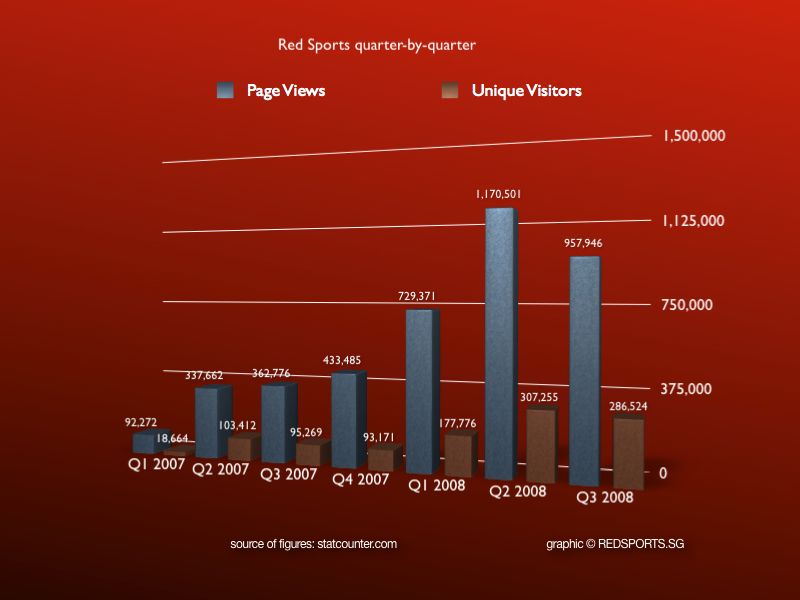
Red Sports is showing strong year-on-year quarterly growth in readership figures. (graphic 1 © Les Tan/Red Sports)
Red Sports saw a 247% increase in page views from from Q3 2007 to Q3 2008 and the recently released 2008 Nielsen Media Index confirms what most of us have guessed – newspaper circulation and television viewers are down while internet usage is up.
In the Nielsen survey of 4,700 people aged 15 years and up, internet usage went up 5%. The same survey reported that the percentage of newspaper readers dropped 2% while television usage fell 5% (see graphic 4 below).
The decline in newspaper circulation figures is a long-term trend. In a separate set of figures provided online by the Department of Statistics, circulation of English newspapers dropped 24.5% from 2002 to 2007. Chinese newspapers, on the other hand, saw circulation rise 24.8% in the same period. Looking at the Audit Bureau of Circulations numbers and numbers culled from other online sources, the circulation of the Straits Times in particular has dropped 3.5% from 1998 to 2007 (see graphic 3 below).
The internet is a newspaper killer of the first order, with news websites able to publish stories even before the newspaper has gone to print. For sports news in particular, international sites provide up-to-the-minute news updates and stories. The local English newspapers (Today, Straits Times, The New Paper) focus on international sports news (see graphic 2 below), and now find themselves giving internet-savvy readers little reason to read their outdated sports news section each morning.
For media junkies, identified by the Nielsen Media Index as consuming up to five different sources of media (newspapers, TV, magazines, radio, Internet), the duplication is sometimes glaringly obvious. Local English newspapers replicate many stories found online which have been published by Reuters, Associated Press, The New York Times, Guardian Online and Los Angeles Times.
The New Paper is focused on international football, especially the English Premier League. A survey of four editions of The New Paper this past week counts 59 stories focused on international sports and only seven on local sports. For Today, the ratio is 28 to 5, and the Straits Times, 44 to 10.
Red Sports polls indicate some of our readers don’t bother with the local English newspapers. About 39% of Red Sports readers don’t read The New Paper. 24% of Red Sports readers don’t touch The Straits Times. Red Sports also outranks The Straits Times among our readers 38% to 22% as a source for Singapore sports news (see ongoing polls below).
The New Paper and The Straits Times are owned by Singapore Press Holdings (SPH) Limited. SPH also owns 40% of Today. SPH recently reported that their full-year net profit was down 12.4% to S$437 million on revenues of S$1.3 billion (up 12.1%). SPH chief executive Alan Chan was quoted as saying that advertising revenue is expected to decline in tandem with the Singapore economy. To add further to the gloomy outlook for the papers, OCBC Investment Research reported on their website that news print costs are expected to rise 18-35% in the next three quarters.
The 2008 Nielsen Media Index report also pointed out that readership for The New Paper has ‘slipped slightly’ and attribute the drop to newer platforms like the internet. “The Internet has become an essential space for traditional news media,” said Nielsen’s executive director Ms Rebecca Tan.
With more Generation Xs and Generation Ys going to the internet primarily for news and information, some magazines with a youth-oriented readership have folded recently. Magazine titles Lime, Kids Magazine, Electronic Gaming Monthly and Vanilla were recently dropped by Mediacorp’s publishing division. The titles will be reincarnated – you guessed it – online.
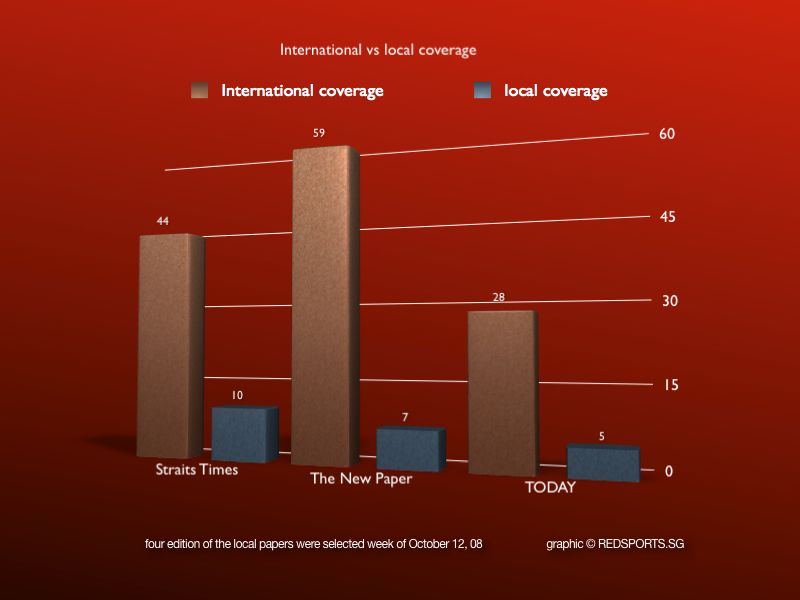
The three local English newspapers (Today, Straits Times, New Paper) provide more coverage for international sports. Based on four editions each during the week of October 12th, the number of stories focused on international sports outweighs local sports stories by a factor of 6 to 1. (graphic 2 ©Â Les Tan/Red Sports)
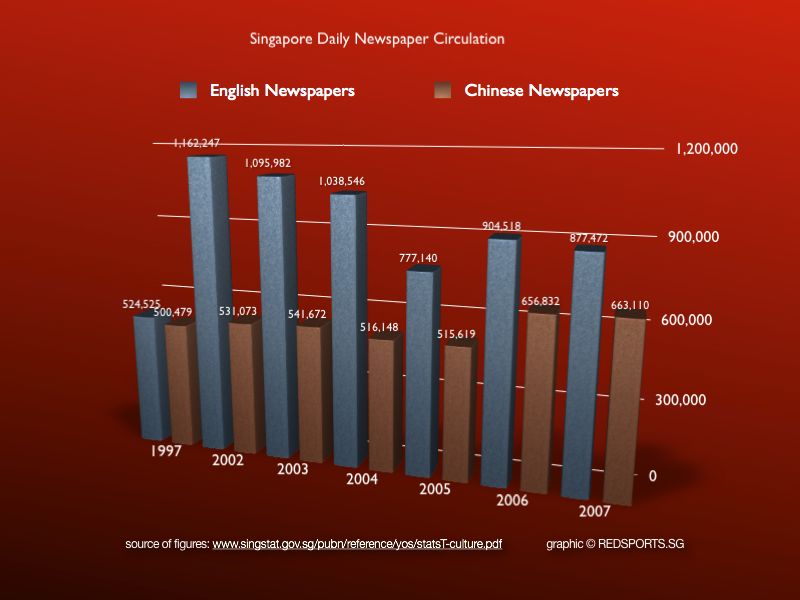
The circulation of local English newspapers is down while Chinese newspapers show an uptrend. (graphic 3 © Les Tan/Red Sports)
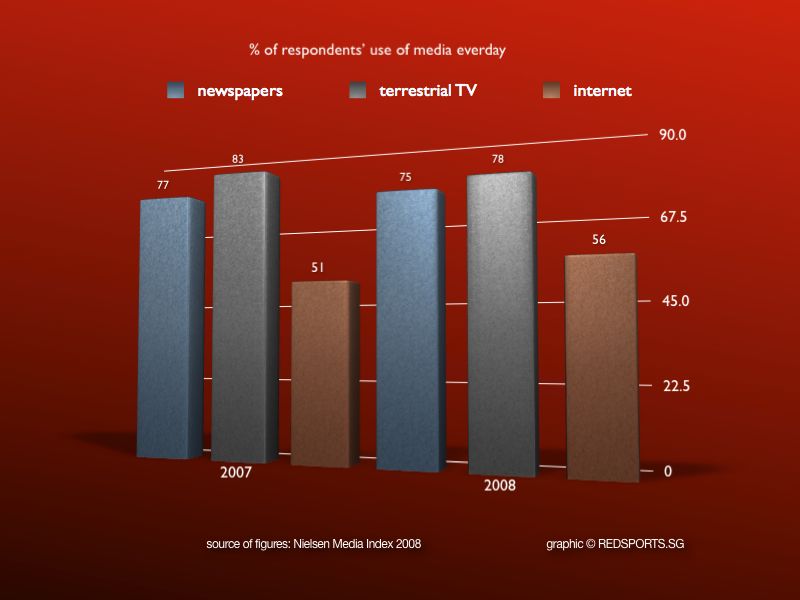
Internet usage is up 5% while newspapers and television show a downtrend in Singapore according to the 2008 Nielsen Media Index. (graphic 4 © Les Tan/Red Sports)
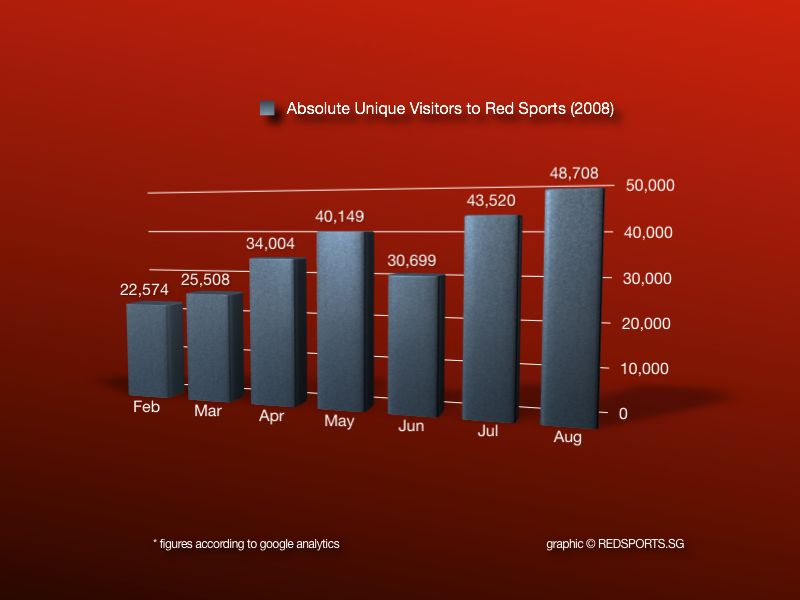
The number of monthly readers Red Sports gets compares favourably with those of local magazines. Maxim magazine gets about 39,000 readers monthly according to the Audit Bureau of Circulations. (graphic 5 © Les Tan/Red Sports)
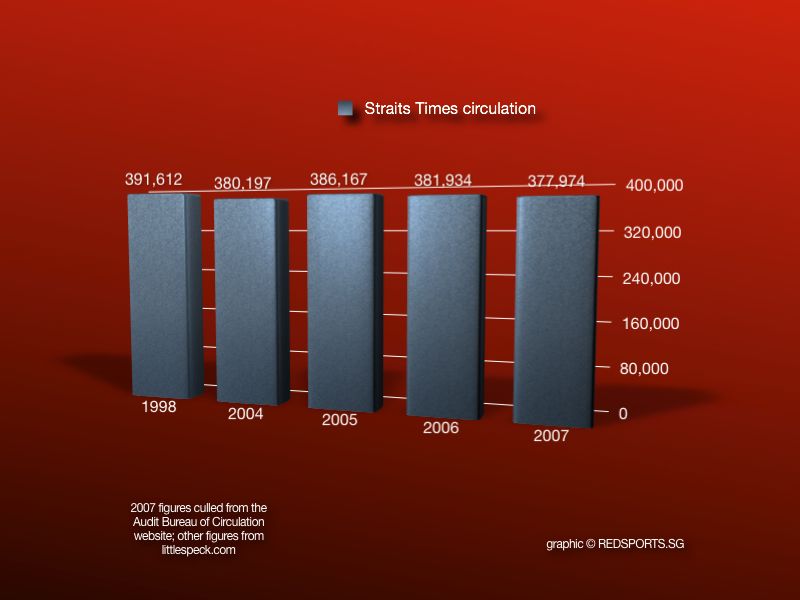
The Straits Times has seen circulation drop 2.5% from 1998 to 2007. (N.B. Circulation figures are different from readership figures. Circulation numbers can go down while readership figures can show an uptrend.) (Graphic 6 © Les Tan/Red Sports)
REDpoll
REDpoll
REDpoll
Related stories:
Red Sports ranks in the top 8% in blogosphere (and other such self-congratulatory stats)
France looks to save its newspapers
Some papers in financial trouble are leaving the AP to cut costs

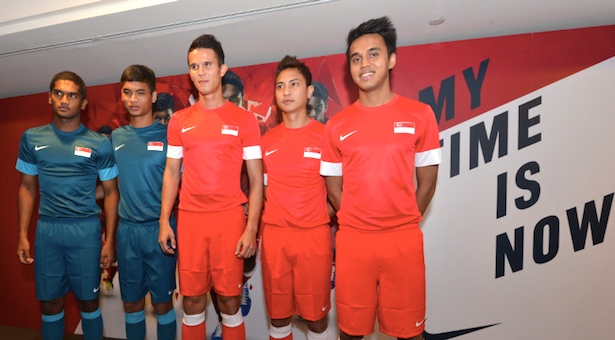

[…] and more tech-savvy audience. It’s apparent in a 2008 Nielsen Media Index survey as featured on Red Sports that with the increase of internet usage came the decline of newspaper and television users. While […]
[…] Huffington Post: I’m Ready to Declare a Winner in the 2008 Race New York Times: Sea change in U.S. politics after race for president New York Times: Monitor shifts from print to Web-based strategy Red Sports ranks in the top 8% in blogosphere (and other such self-congratulatory stats) New York Times: France looks to save its newspapers New York Times: Some papers in financial trouble are leaving the AP to cut costs Newspapers and television decline while internet use goes up (or why Red Sports has more readers) […]
Thanks, ct 😉
redsports ftw!
[…] Related story: Newspaper and television usage decline while internet users go up (or why Red Sports has more reader… […]